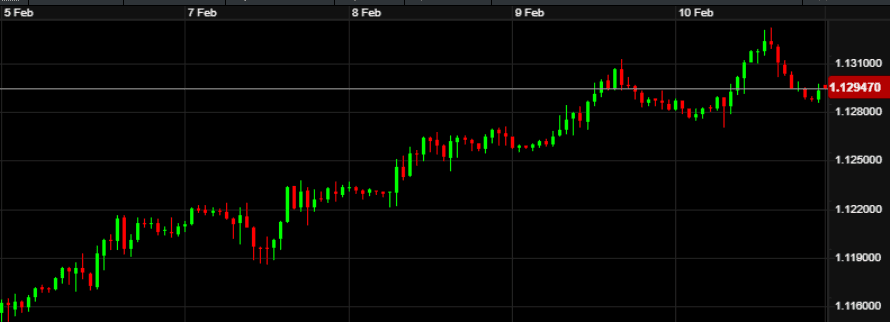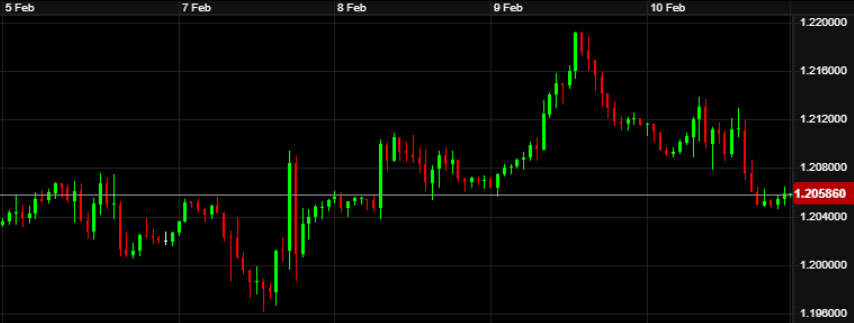ACM Update 13-02-23

The UK economy somehow managed to avoid moving towards a recession in the final quarter of 2022, thanks to better figures in October supporting the data. December’s numbers were hugely impacted by the widespread industrial action, but were enough to manage a total quarterly "growth" of 0.0%. How long can the UK walk the economic tightrope for?
This week sees the latest round of inflation data from both sides of the Atlantic, which will be pivotal for ongoing Federal Reserve and Bank of England monetary policy.
After the November UK GDP data was released a month ago, there was a conversation in the Aston office regarding the likelihood of a recession “officially” starting in Q4. The simple maths meant that there would have had to have been a monthly contraction in GDP from November to December of greater than minus 0.5%, to achieve a negative growth overall for the quarter. The general consensus was that “only a disaster” could create such a drop, but that is pretty much what we got for December.
Fortunately for the statisticians, October having seen such a bounce back after the additional bank holiday in September, saved the overall quarterly figure. This means the UK is not technically on its way to a recession… yet. The record books will state that the quarter was flat for growth, but a sizeable asterisk wouldn’t go amiss frankly.
Indeed, the NIESR (National Institute of Social and Economic Research) suggested last week they expect the UK to narrowly avoid recession in 2023, but to only achieve 0.2% growth in total. They also commented that inflation will still be above 3% by the end of 2024, only coming back in line with the Bank of England’s 2% target by Q3 of 2025.
One area which has been suffering over the last few months is the housing market. The latest figures from Halifax show that house prices were flat in January, which is perhaps a more optimistic figure than other lenders have suggested.
Despite gloomy data, the above figures not being “as bad” as they could have gave GBP a boost amongst a quieter week for releases. Some of the most senior members of the Bank of England, seemed to continue hinting at further rate hikes in the March meeting, when unveiling their recent Monetary Policy Report. Sterling gained around 1.5% against the Euro during the week, as shown in the chart below:

For now we may well have seen a slight bounce off the bottom on GBP-Euro, so any Euro sellers should reach out to the team to discuss appropriate mechanisms.
Fewer Eurozone data releases last week also led to a slightly softer week for the single currency against other majors such as sterling and USD. Most of the excitement of the previous week, driven by the continued more bullish stance of Christine Lagarde and her fellow European Central Bank members, seemed to have worn off.
German inflation figures were released and showed a rise for the first time in three months, coming in at 1.0% month on month. The main reason for the increase over the previous month was the fact that a one-off energy price subsidy had effectively skewed the previous month. The annualised figure moved from 8.6% in December to 8.7% in January. There was some suspicion about the figure though, given it was released some ten days later than usual.
Eurozone retail sales also came in at -2.7% for December (month on month), showing a serious drop in festive spending on the continent. Whilst the milder winter is definitely reducing exposure to expensive energy, consumers are seemingly remaining cautious when it comes to their spending habits.
Dollar data remained relatively thin on the ground last week too, but that didn’t stop a 2% range on GBP-USD throughout the week. We briefly dipped back under 1.20 for the first time in a month, before recovering to almost 1.22 on Thursday afternoon.
Concerns around suspicious balloons in the skies above North America were certainly in the headlines, but aside from that a Jerome Powell press conference was the main talking point economically. The Federal Reserve Chair effectively brushed aside the incredibly strong US jobs figures from the week before, but made it clear that interest rates will need to go higher if jobs and inflation figures continue to exceed expectations. Based on this, the inflation data this week will be fairly crucial.
GBP-USD movements over the last week can be seen in the chart below:

Other points of note included interest rate hikes from two G10 currency central banks. In Australia, the RBA mirrored their last meeting with a 0.25% rate hike, taking the base rate there to 3.35% and its highest in over a decade. This was their ninth rate hike in a row.
In Sweden, the Swedbank sprung a surprise with a 50 basis point hike, having looked previously like it was coming to the end of its rate hiking cycle. The bank stated a desire to create a stronger currency, and suggested a further 0.25% hike in each of its next two meetings. The Swedish Krona (SEK) gained circa 2% on the day against the Euro and some other majors after the unexpected move.
The week ahead:
Monday – Swiss Inflation m/m (07:30 UK time)
Tuesday – UK Unemployment (07:00), US Inflation exp 6.2% (13:30)
Wednesday – UK Inflation exp 10.3% (07:00), US Retail Sales (13:30), Christine Lagarde speech (14:00)
Thursday – US Producer Price Index (13:30)
Friday – UK Retail Sales (07:00)
All eyes back on inflation this week, but to be honest when aren’t they at the moment. With releases from both sides of the Atlantic this could be crucial do determine upcoming monetary policy action from both Bailey & co, and Powell & co. Aside from that, retail sales and unemployment data released will all be contributory factors towards central bank policy too.
The recent drops for sterling show just how short-lived such events can be. Approaches such as market orders have been particularly fruitful for some clients of late, so reach out to your Aston contact to discuss in more detail if relevant to you. This week could easily see plenty of movement, as data releases will be used to second-guess upcoming monetary policy.
Have a great week.